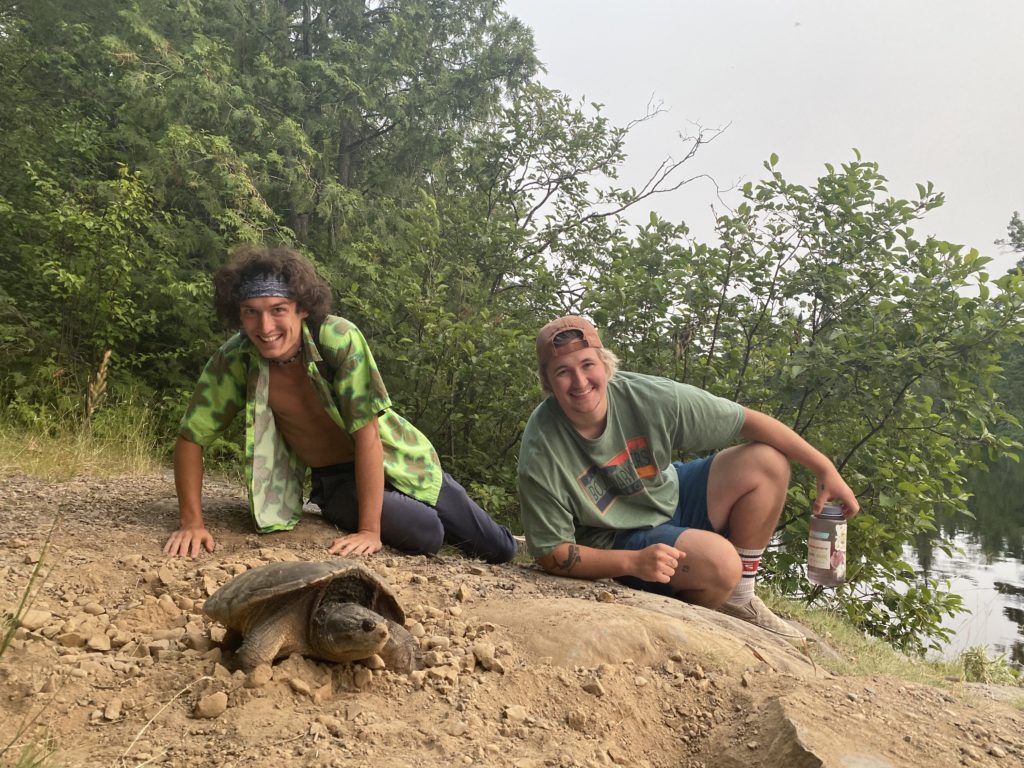7/13/2021- One of the most exciting visitors of the season has been appearing on our shores. We are not sure what her name is but her presence is definitely noticed! She is a snapping turtle who is deciding if Sawbill is a safe enough place to lay her eggs! We understand how cool it can be to see these creatures on our shores but we ask you to take into consideration their feelings and personal space. We love our snapping turtles and encourage you to tell them a story, take pictures with them, and say hi but refrain from picking them up or touching their body. This helps keep the turtles safe and healthy and also ensures that everyone keeps all of their fingers!

Snapping turtles are incredible creatures that can live more than 40 years! Their distinctive features include their large heads and necks which have blunt wart-like tubercles on them. Snappers typically build their nests in the summer and springtime. They choose dry, sandy areas and can lay between 20 and 40 eggs! These eggs take 60 to 65 days to incubate which means they generally hatch in mid-August.
More turtle facts pulled from https://www.cookmuseum.org:
- Common Snapping Turtle’s scientific name is Chelydra serpentina. Chelydra is a Greek word that means “tortoise” and serpentina is derived from the Latin word serpentis, which means “snake”. This word refers to its long tail.
- They have powerful jaws and have an average bite force of 209 N. They may not have the same force that you do when you bite with your molars (1300 N) but they have enough force to do some real damage.
- The Common Snapping turtle is an aquatic turtle that prefers slow-moving, shallow bodies of water with muddy bottoms, which give them places to hide.
- They are omnivores, meaning they eat plants and animals. Their diet consists of plants, insects, worms, snakes, fish and other small animals.
- You can find the Common Snapping Turtle all the way from southeastern Canada to the southern tip of the Florida panhandle.
– Diana
